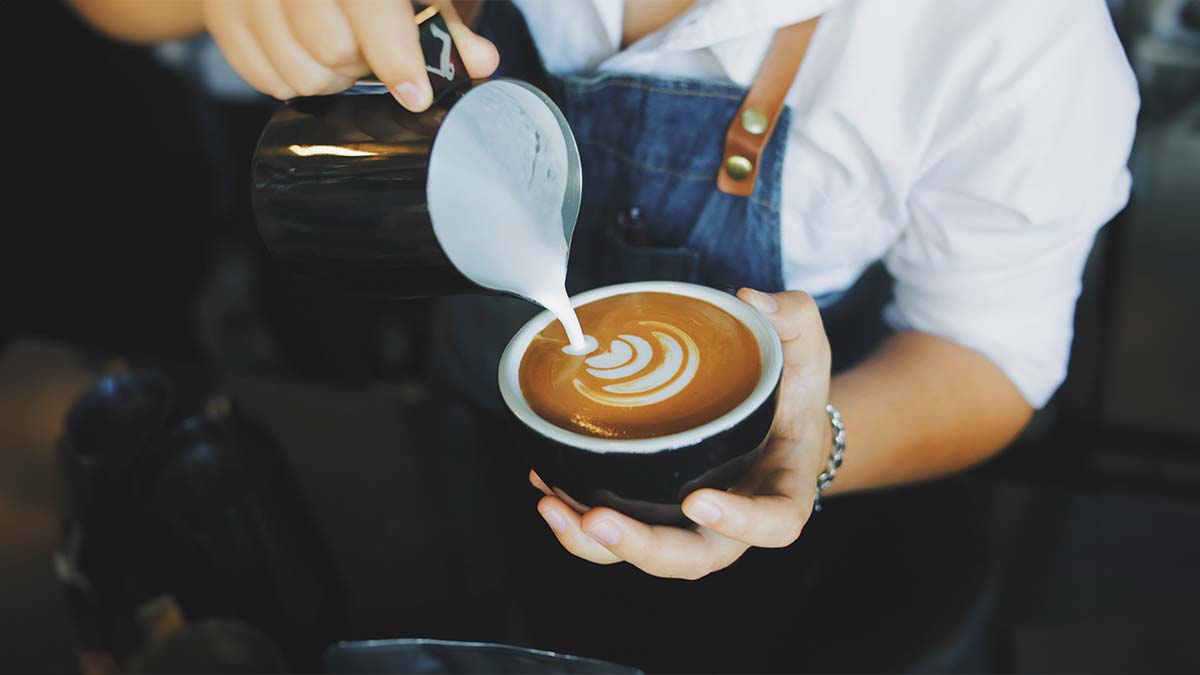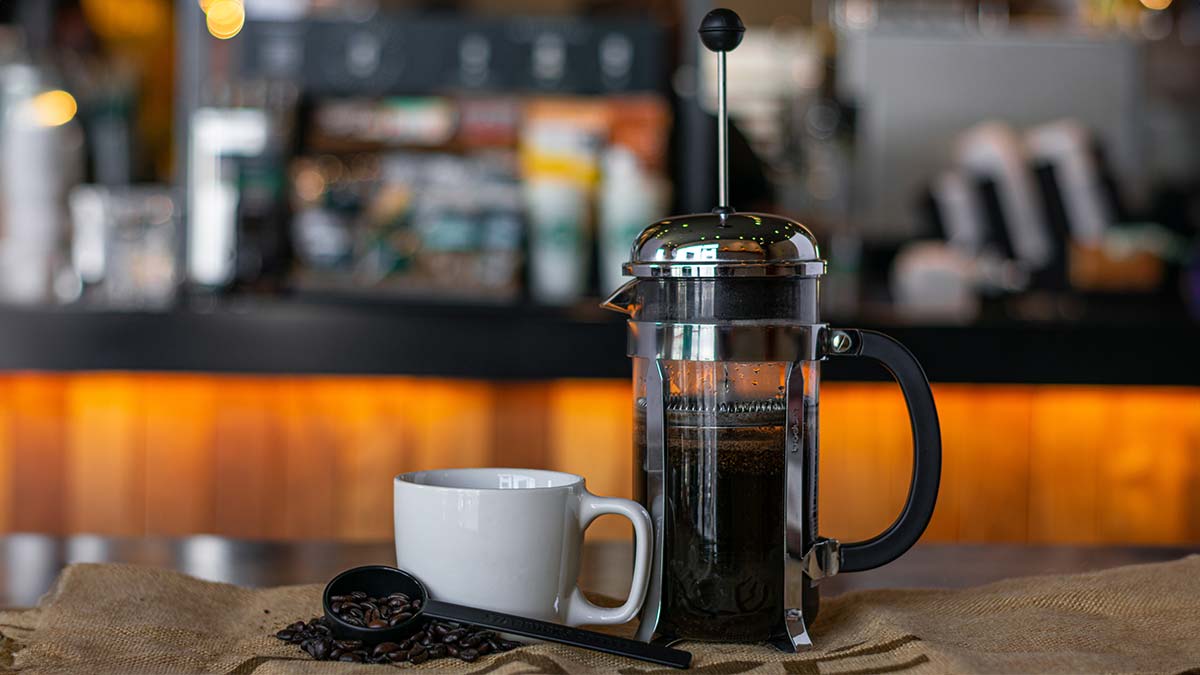There’s something truly satisfying about a perfectly crafted cappuccino. The rich espresso, the creamy froth, and the smooth balance of flavors create a coffee experience that’s both indulgent and comforting. While it might seem like a drink best left to baristas, making a cappuccino at home is easier than you might think—especially with the right guidance and high-quality GothRider Coffee.
In this guide, we’ll walk you through everything you need to know to make a delicious cappuccino in your own kitchen. From choosing the best beans and brewing the perfect espresso to frothing milk like a pro, we’ve got you covered. Whether you’re a seasoned coffee enthusiast or just starting your journey into the world of espresso drinks, this guide will help you master the art of the cappuccino.
Understanding the Classic Cappuccino
Before we dive into the process, let’s take a moment to understand what makes a cappuccino unique. A traditional cappuccino is an Italian coffee drink composed of equal parts espresso, steamed milk, and milk foam. This balance of ingredients creates a drink that is both strong and smooth, with a rich texture and a satisfying taste.
The key elements of a cappuccino are:
- Espresso: The base of the cappuccino is a shot of espresso, made from finely ground coffee beans brewed under high pressure. The espresso provides the rich, bold flavor that is the foundation of the drink.
- Steamed Milk: The next layer is steamed milk, which adds creaminess and helps to balance the intensity of the espresso.
- Milk Foam: The final layer is a thick layer of milk foam, which adds a light, airy texture and a bit of sweetness to the drink. The foam also acts as an insulator, keeping the cappuccino hot.
Selecting the Best GothRider Coffee for Your Cappuccino
The foundation of any great cappuccino is the espresso, and that starts with choosing the right coffee beans. For a rich and flavorful cappuccino, we recommend using GothRider Coffee’s [specific blend or roast], which is specially crafted to bring out the bold, robust flavors that make a perfect espresso.
When selecting coffee for your cappuccino, consider the following:
- Freshness: Always use freshly roasted coffee beans for the best flavor. The fresher the beans, the more vibrant and complex the espresso will be.
- Roast Level: While cappuccinos can be made with a variety of roast levels, a medium to dark roast is often preferred. These roasts tend to have a deeper, richer flavor that pairs well with the creaminess of the milk.
- Grind Size: For espresso, a fine grind is essential. The coffee should be ground to a consistency similar to table salt. This allows the water to extract the full range of flavors during the short brewing process.
Step-by-Step Guide to Making a Cappuccino with GothRider Coffee
- Brew Your Espresso: Start by brewing a shot (or double shot) of espresso using your GothRider Coffee beans. If you have an espresso machine, follow the manufacturer’s instructions for pulling the perfect shot. If you don’t have an espresso machine, you can use a stovetop espresso maker (Moka pot) or an Aeropress with an espresso attachment. The goal is to create a strong, concentrated coffee with a rich crema on top.
- Steam the Milk: Next, steam your milk to create a smooth, velvety texture. If you have an espresso machine with a steam wand, submerge the wand into the milk and steam until the milk reaches around 150°F (65°C). The milk should double in volume, creating a thick, frothy consistency. If you don’t have a steam wand, you can heat the milk on the stove and then froth it using a handheld milk frother or French Press.
- Pour the Milk: Once your milk is steamed and frothed, it’s time to assemble your cappuccino. Pour the steamed milk into the espresso, holding back the foam with a spoon. Once you’ve poured the milk, top the cappuccino with a generous spoonful of milk foam. The final drink should have distinct layers, with the espresso at the bottom, the steamed milk in the middle, and the foam on top.
- Optional Garnishes: For an extra touch of flavor, consider adding a dusting of cocoa powder, cinnamon, or nutmeg on top of the foam. These garnishes add a bit of sweetness and spice, enhancing the overall flavor of the cappuccino.
Tips and Tricks for a Perfect Cappuccino Every Time
Even with a straightforward process, there are a few tips that can help you take your cappuccino to the next level:
- Use Cold Milk: Starting with cold milk makes it easier to create the microfoam necessary for a good cappuccino. The colder the milk, the more time you have to create the foam before the milk reaches the desired temperature.
- Invest in Quality Equipment: While it’s possible to make a cappuccino without an espresso machine, investing in a good quality machine or milk frother can make a significant difference in the quality of your drink. The consistency of the espresso and the texture of the foam are key to making a great cappuccino.
- Experiment with Milk Alternatives: If you prefer non-dairy options, you can make a cappuccino with almond, soy, oat, or coconut milk. Just be aware that these alternatives have different frothing properties, so you may need to adjust your technique.
- Practice Makes Perfect: The art of making a cappuccino takes practice, especially when it comes to steaming and frothing milk. Don’t be discouraged if your first few attempts aren’t perfect—keep practicing, and you’ll soon be making barista-quality cappuccinos at home.
Avoid These Common Cappuccino-Making Mistakes
Making a cappuccino might seem simple, but there are a few common pitfalls that can prevent you from achieving that perfect balance of espresso, milk, and foam:
- Overheating the Milk: One of the most common mistakes is overheating the milk, which can cause it to lose its sweetness and create a burnt flavor. Always keep the milk temperature below 160°F (70°C) to preserve its natural sweetness.
- Incorrect Foam Consistency: The foam on a cappuccino should be light and airy, not dense and bubbly. If your foam is too stiff or bubbly, it might be because you’re not incorporating enough air during the steaming process. Aim for a smooth, velvety foam that holds its shape when spooned onto the cappuccino.
- Using Stale Coffee Beans: The quality of the espresso is the foundation of your cappuccino, so it’s important to use fresh, high-quality coffee beans. Stale or low-quality beans can result in a weak or bitter espresso, which will negatively impact the overall flavor of the drink.
Elevate Your GothRider Cappuccino Experience
Creating a perfect cappuccino is about more than just the right technique—it’s about creating an experience. Here are some tips to enhance your enjoyment of your homemade cappuccino:
- Pair with a Sweet Treat: A cappuccino pairs beautifully with a variety of sweet treats. Try enjoying your cappuccino with a freshly baked biscotti, a slice of cake, or even a piece of dark chocolate. The sweetness of the treat complements the rich, bold flavors of the coffee.
- Use a Pre-Warmed Cup: To keep your cappuccino hot for longer, pre-warm your cup by filling it with hot water before brewing. Just before pouring the espresso, dump the water, and your cup will be perfectly warm, helping to maintain the temperature of your drink.
- Create a Morning Ritual: Turn your cappuccino-making into a daily ritual by setting aside a few quiet moments each morning to enjoy your coffee. Whether you savor it slowly while reading or take it with you on a morning walk, creating a ritual can make your cappuccino experience even more enjoyable.
Cappuccino FAQs: Answering Your Top Questions
What’s the difference between a cappuccino and a latte? A cappuccino is made with equal parts espresso, steamed milk, and milk foam, resulting in a balanced and rich drink. A latte, on the other hand, has more steamed milk and less foam, making it creamier and milder in flavor.
Can I make a cappuccino without an espresso machine? Yes, you can make a cappuccino without an espresso machine by using a Moka pot or Aeropress to brew a strong coffee concentrate. You can also froth milk using a French Press or handheld milk frother. While the result may not be exactly like a barista-made cappuccino, these tools can get you very close to the real thing.
How do I achieve the right foam consistency for a cappuccino? Achieving the perfect foam consistency requires practice. Start with cold milk and use a steam wand or frother to incorporate air into the milk as it heats. The goal is to create microfoam—small, velvety bubbles that add a creamy texture to your cappuccino. If you’re using a steam wand, position it just below the surface of the milk and tilt the pitcher slightly to create a whirlpool effect. This helps evenly distribute the air throughout the milk.
What type of milk is best for making a cappuccino? Whole milk is the traditional choice for making cappuccinos because it steams well and creates a rich, creamy foam. However, you can use any milk or milk alternative you prefer. Non-dairy options like oat milk, almond milk, and soy milk can also work well, but they may produce a different texture and flavor.
[H3] How can I add flavor to my cappuccino? You can add flavor to your cappuccino by incorporating flavored syrups, such as vanilla, caramel, or hazelnut, into the espresso before adding the milk. Additionally, sprinkling cocoa powder, cinnamon, or nutmeg on top of the foam adds a subtle but delicious flavor boost.
Presentation Tips: Elevate the Aesthetic of Your Cappuccino
While the taste of your cappuccino is paramount, presentation also plays a significant role in the overall experience. Here are some tips to make your homemade cappuccino look as good as it tastes:
- Perfecting Your Pour: When pouring the steamed milk into the espresso, aim for a slow, steady pour. Start by adding the milk first, then finish with the foam. This method creates the distinct layers of a cappuccino, with the espresso on the bottom, the milk in the middle, and the foam on top.
- Creating Latte Art: If you’re feeling adventurous, try your hand at latte art. While it’s traditionally done with a latte, you can also create simple designs on your cappuccino by pouring the milk in a specific pattern. Start with basic shapes like hearts or rosettas, and with practice, you can advance to more intricate designs.
- Using a Stencil: For a professional touch, use a stencil to dust cocoa powder, cinnamon, or other toppings in a specific shape on top of the foam. You can find stencils in various designs, from simple hearts to intricate patterns, which can add a personal and artistic flair to your cappuccino.
- Serving with Style: Choose a beautiful, pre-warmed cup to serve your cappuccino in. A well-chosen cup can enhance the aesthetic appeal of your drink and make the experience feel even more special. Consider using a ceramic or glass cup that showcases the layers of your cappuccino.
Building Your Own Home Café: Tools and Tips
If you find yourself making cappuccinos frequently, you might want to consider enhancing your home café setup. Investing in quality tools can elevate your coffee-making experience and ensure that every cappuccino you make is consistent and delicious.
- Espresso Machine: While not a necessity, an espresso machine is a worthwhile investment if you’re serious about making espresso-based drinks like cappuccinos. Look for a machine with a built-in steam wand for frothing milk, as this will give you the most control over your drinks.
- Grinder: A good burr grinder is essential for making espresso. Unlike blade grinders, burr grinders produce a consistent grind size, which is crucial for extracting the full flavor of your coffee. Being able to adjust the grind size allows you to perfect your espresso shots.
- Milk Frother: If you don’t have a steam wand, a standalone milk frother is a great alternative. There are electric frothers that heat and froth the milk simultaneously, or you can opt for a handheld frother that allows for more manual control.
- Scale: Precision is key in making a great cappuccino, and a kitchen scale can help you measure your coffee and water accurately. This ensures that you’re using the correct ratios every time, leading to consistent results.
- Tamping Mat and Tamper: If you have an espresso machine, a tamper is essential for evenly compressing the coffee grounds in the portafilter. A tamping mat provides a stable surface for tamping and helps protect your countertops.
Conclusion: Mastering the Art of the Cappuccino
Making a perfect cappuccino at home is not just a skill—it’s an art that brings the café experience right into your kitchen. With the right tools, techniques, and high-quality GothRider Coffee, you can craft a cappuccino that rivals those made by professional baristas. From selecting the freshest beans to mastering the milk froth, each step in the process contributes to the final product: a rich, creamy cappuccino that’s the perfect balance of espresso and milk.
Whether you’re enjoying it as a morning pick-me-up or as a cozy afternoon treat, a homemade cappuccino is a small luxury that can elevate your daily routine. So, take your time, savor the process, and enjoy the delicious results. With practice, you’ll be able to make a cappuccino that not only tastes amazing but looks beautiful too.
Ready to Brew? Shop GothRider Coffee Now!
Ready to create the perfect cappuccino at home? Shop our GothRider Coffee beans and discover the rich flavors that will elevate your espresso drinks. Don’t forget to share your cappuccino creations with us on social media—we’d love to see your work!



